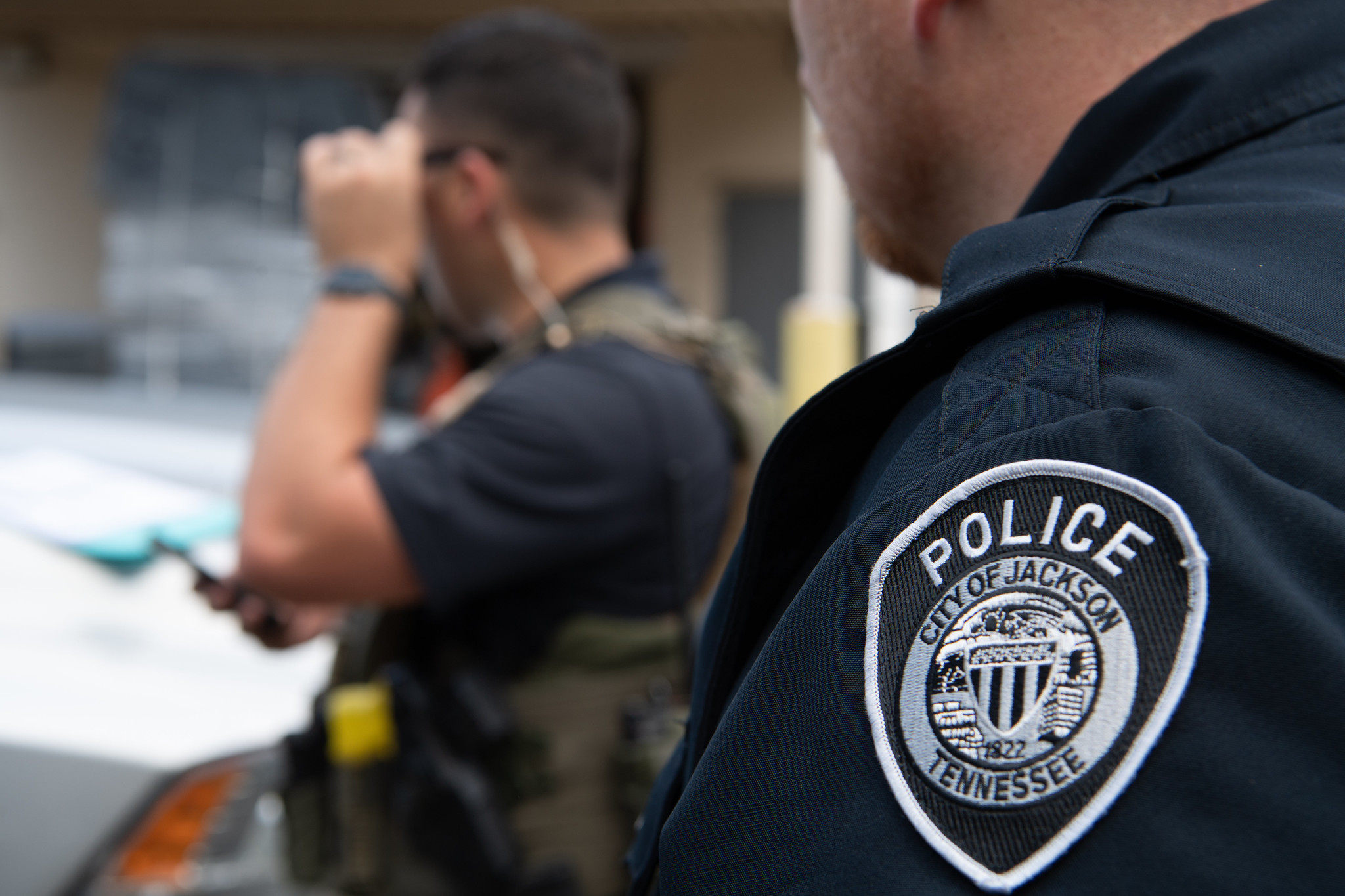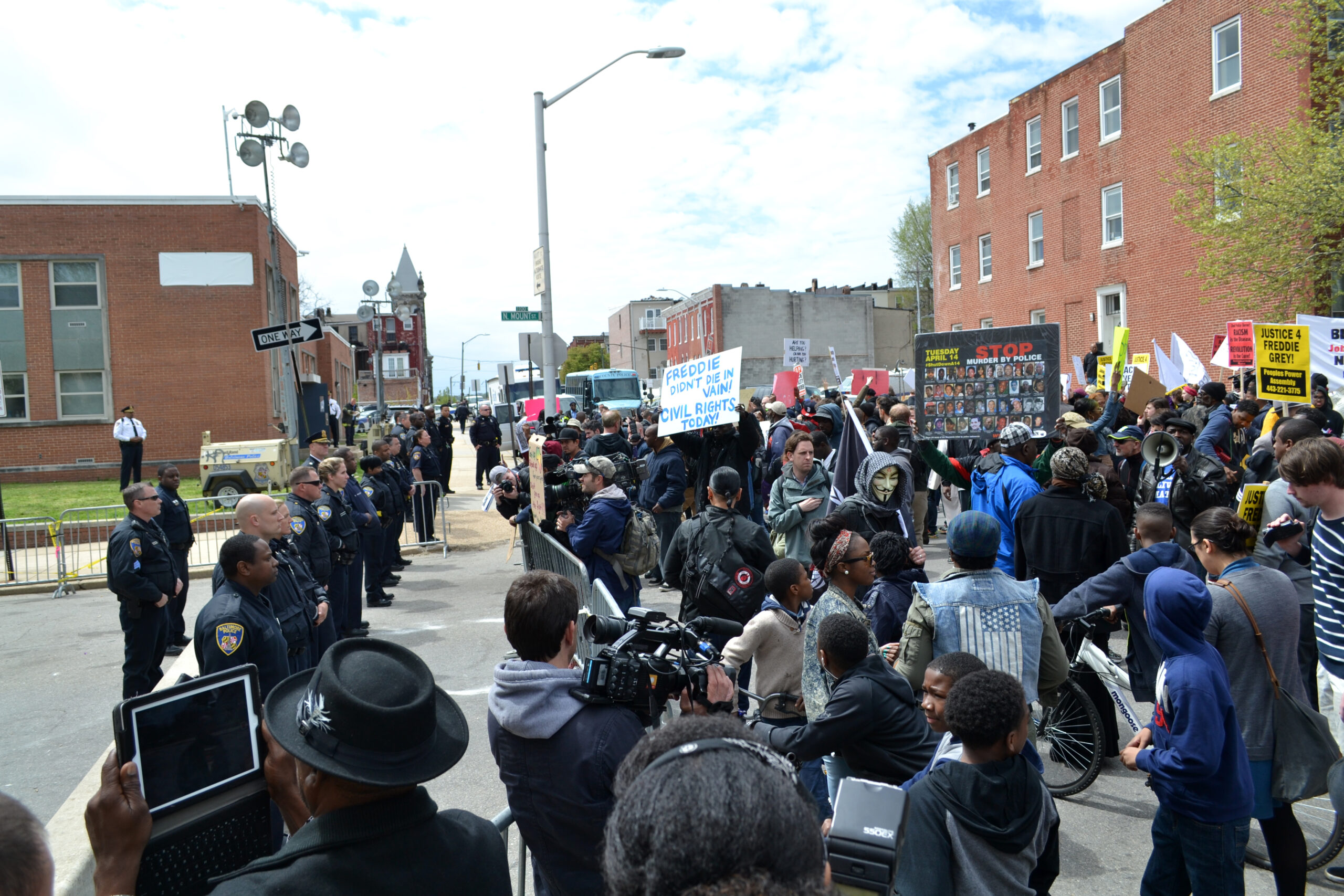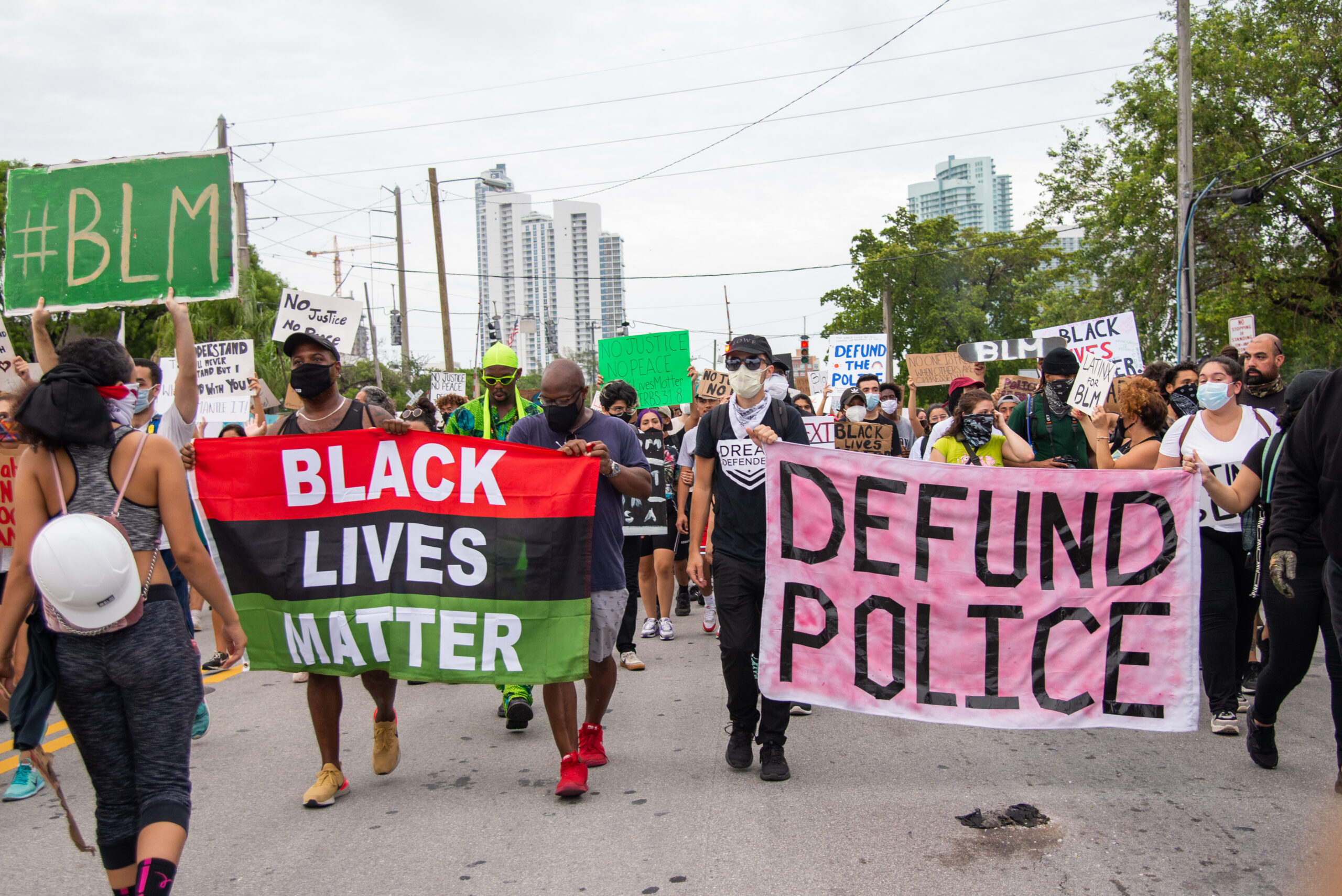Far from “restoring peace,” officers in the SCORPION unit turned the streets of Memphis into a violent scene that led to death, writes Marjorie Cohn.

(Office of Public Affairs, US Marshals Service, Flickr, CC BY 2.0)
 The Memphis police officers who killed Tyre Nichols were members of a unit called SCORPION — the Street Crimes Operation to Restore Peace in our Neighborhoods. But far from “restoring peace,” these officers turned the streets of Memphis into a violent scene of torture that led to the death of Nichols.
The Memphis police officers who killed Tyre Nichols were members of a unit called SCORPION — the Street Crimes Operation to Restore Peace in our Neighborhoods. But far from “restoring peace,” these officers turned the streets of Memphis into a violent scene of torture that led to the death of Nichols.
SCORPION was modeled after the bogus theory of “broken windows policing ”: the thoroughly debunked idea that if cops make arrests for minor offenses, it will prevent the commission of serious ones. But it didn’t work out that way. Under the guise of enforcing a traffic law, the officers who have been charged with murdering Nichols committed much more serious crimes [than any traffic infraction]. After Nichols was killed, SCORPION was disbanded.
On Jan. 7, five officers stopped Nichols for reckless driving (although the police chief admitted they had no legal basis for the stop). They yanked him from his car and beat him brutally. For 13 minutes until they reported it on the radio, the officers shouted at least 71 contradictory commands, many of them physically impossible for the battered Nichols to follow.
They repeatedly beat, kicked and punched him, using fists, feet and a baton. They sprayed pepper spray into his eyes and a sixth officer tased him.
Two emergency workers watched the beating but rendered almost no assistance to Nichols and left after seven minutes. The ambulance didn’t arrive for more than 25 minutes after the officers stopped beating Nichols.
Tyre Nichols died in the hospital three days later. He was 29 years-old and the father of a 4-year-old boy. An autopsy determined that Nichols “suffered extensive bleeding caused by a severe beating.”
Preemptive Police Force
SCORPION was a 40-officer unit created just over a year ago under the Memphis Police Department’s Organized Crime Unit as a kind of preemptive policing force. Often patrolling “high-crime areas” in unmarked cars, those officers used routine traffic stops to locate and arrest people for more serious offenses.
The targets of SCORPION were overwhelmingly Black men. Although the population of Memphis is around 65 percent Black, about 90 percent of people arrested by the unit were Black.
These so-called high-crime areas “realistically are highly impoverished,” Amber Sherman, an organizer with the official Black Lives Matter Memphis chapter, told Vox. Local authorities “refuse to provide adequate resources to those areas and use it as an excuse to traumatize us and brutalize us, and in this case, murder us.”
Memphis's skateboarders pushing down Main Street in honor of Tyre Nichols, who was known for his skills at parks here and in Sacramento.
The skating scene here is more scattered than Sac's, skaters say, but they told me they still feel like they lost a part of their family. pic.twitter.com/Qo5a2N4LUr
— Nicholas Bogel-Burroughs (@NickAtNews) February 4, 2023
Hunter Dempster, an organizer for Decarcerate Memphis, told The New York Times that SCORPION’S chief mission was apparently to conduct mass pullovers in poor neighborhoods where many people of color live. These officers, Dempster said, were “violent” bullies who drove unmarked vehicles, “regular cars that you would never think were police.”
“The way they move in unmarked cars, looking like regular guys, bumping to rap music, they got on hoodies, they’re really looking the part, like they’re a part of the community, but they’re police,” Keedran Franklin, a community organizer in Memphis, told NBC News. “Then someone maybe slips up, smokes weed or doesn’t have their seat belt on or a headlight is out, and they jump out and stop them and want to go through their car.”
Modeled on Debunked Theory
 The rationale for SCORPION was “broken windows policing,” often called “order maintenance” policing. It is a dangerous manifestation of systemic police violence which is frequently perpetrated against people of color, based on the now-discredited assumption that the presence of “disorder” and “disorderly people” in spaces and communities is unsafe and leads to more serious offenses.
The rationale for SCORPION was “broken windows policing,” often called “order maintenance” policing. It is a dangerous manifestation of systemic police violence which is frequently perpetrated against people of color, based on the now-discredited assumption that the presence of “disorder” and “disorderly people” in spaces and communities is unsafe and leads to more serious offenses.
Thus, the theory goes, police should focus their attention on those who are loitering, panhandling, breaking windows or just appearing out of place.
“There is no evidence that policing disorder lowers crime or that broken windows works,” Professor Bernard Harcourt, director of the Columbia Center for Contemporary Critical Thought and author of Illusion of Order: The False Promise of Broken-Windows Policing, said in a 2015 talk at Columbia University. “But it has had a tremendously disproportionate impact on African American and Hispanic communities.”
Race Matters in Police Violence
Although five of the six murderous officers were Black like Nichols himself, it is the race of the victim, not the perpetrating cops, that is often determinative when it comes to police violence.
“It’s not just a Black and white issue, but a Black and blue one,” Professor Jody Armour, a law professor at the University of Southern California and expert on racial justice, told The New York Times. “And when you put on that blue uniform, it often becomes the primary identity that drowns out any other identities that might compete with it.”
Broken windows policing is not race-neutral. It “relies on racialized assumptions about what constitutes disorder and which communities are disorderly,” the International Commission of Inquiry on Systemic Racist Police Violence Against People of African Descent in the United States (for which I served as a rapporteur) concluded in its 2021 report.
The commission found that officers who police low-level offenses often come into contact with residents of Black and poor communities and their encounters frequently escalate into violence.
The cases of George Floyd, who was allegedly using a counterfeit $20 bill, and Eric Garner, who was selling loose cigarettes, were cited by the Commission. “[P]olice targeted these Black men because they were accused of low-level, non-violent crimes, despite the fact that they were not a threat to anyone in their communities, including law enforcement,” the Commissioners wrote.

Freddie Gray protest at the Baltimore Police Department, April 25, 2015. (Veggies, CC BY-SA 3.0, Wikimedia Commons)
Order maintenance policing often morphs into “stop-and-frisk” — race-based street stops that frequently result in police-perpetrated killings of Black people.
The Commission examined the cases of Michael Brown, who was walking in the middle of a street in violation of a city ordinance in Ferguson, Missouri; Nathaniel Pickett II, who was crossing a street in San Bernardino, California, and ran from an officer; Shem Walker, who was sitting on his mother’s front stoop in an area of Brooklyn, New York, known for drug dealing; and Freddie Gray, who was walking with friends in a poor Black neighborhood of Baltimore.
All four of these men were killed by police following those encounters.
Officers in four large police departments spent most of their time on low-level encounters they initiated and less than 4 percent of their time investigating violent crime, according to a study conducted in 2020 by The New York Times.
Systemic, Racist Violence
In spite of the nationwide and international outrage at the public lynching of Floyd, police killings have increased, not decreased, since 2020. More people were killed by police in 2022 than in any other year since numbers of killings have been tracked.
Contrary to the oft-repeated claim that police violence is perpetrated by “a few bad apples,” it is really the product of systemic and structural racism.
In the wake of the murder of Nichols, calls for police reform are ubiquitous. But there is also a significant movement to defund and abolish the police.

George Floyd Miami Protest, June 7, 2020. (Mike Shaheen, CC BY 2.0, Wikimedia Commons)
“So the idea that we can sort of reform our way out of this with legislative reform, that doesn’t get to the root of the issue … which is the militarized nature of the police, the top-down structure, the methodology of using violence and violent tactics against the community as the first thing that they do,” Kamau Franklin, founder of the national grassroots organization Community Movement Builders, told my co-host Heidi Boghosian and me in an interview on the radio program Law and Disorder. “No legislative initiative is going to solve it because they’re just going to be Band-Aids on a system that is rotten to its core.”
In the meantime, Franklin said, it should not be police who respond to mental health or houseless crises. Community Movement Builders demands instead that “a team of mental health, substance abuse and domestic violence counseling, conflict resolution, and social work professionals will intervene.”
Franklin also stated that people who write tickets must be unarmed and the police should be demilitarized. There must be community control of the police, giving people in the neighborhood the power to hire, discipline and fire officers.
A hallmark of most police killings is the impunity the officers enjoy. They are rarely charged with crimes and are often acquitted when they are charged.
But just two weeks after Nichols’s murder, five of the officers, all of whom were Black, and who participated in the brutal treatment of Nichols, were fired and charged with second-degree murder, aggravated assault, aggravated kidnapping, official misconduct and official oppression.
Ten days later, the white officer who used a Taser on Nichols was put on desk duty. He was fired three days later. Two emergency medical technicians were suspended and three Fire Department employees were fired. The U.S. Justice Department launched a civil rights investigation into the case.
Marjorie Cohn is professor emerita at Thomas Jefferson School of Law, former president of the National Lawyers Guild, and a member of the national advisory boards of Assange Defense and Veterans For Peace, and the bureau of the International Association of Democratic Lawyers. Her books include Drones and Targeted Killing: Legal, Moral and Geopolitical Issues. She is co-host of “Law and Disorder” radio.
This article is from Truthout and reprinted with permission.
The views expressed are solely those of the author and may or may not reflect those of Consortium News.
Support CN’s
Winter Fund Drive!
Donate securely by credit card or check by clicking the red button:


The family of Dr. King filed and fought a civil case of the “Wrongful Death” of Dr. King. They asserted, before a Memphis jury, evidence that James Earl Ray was a railroaded patsy, and that the City of Memphis as well as other government entities had been involved in a conspiracy to kill Dr. King.
The large amount of evidence presented included a taxi driver testifying that “when picking up a passenger at the Lorraine at the time of the shooting, saw a man come down over the wall, run north on Mulberry Street, get into a Memphis Police Department traffic car and be driven away.”
The Jury heard the evidence and agreed with the King family, that Dr. King had suffered a wrongful death, and that the conspiracy had included the City of Memphis. See “The Plot to Kill King”, by Pepper, the King Family’s lawyer in the case.
Welcome to Memphis.
All police departments give hiring priority to ex-military. So, in addition to a police force that looks “militarized”, the personnel are being staffed directly from the military.
Soldiers who come back from our wars in countries where the civilians are the “enemy” are being put on the streets of our cities.
They are used to treating civilians as the enemy, and now they are doing it to us.
This has been going on at least since the war in Vietnam.
We all know that many soldiers from these wars suffer from an assortent of problems that stem from their military days.
It is about time the public is provided with more information about these violent officers, including whether or not they are “ex-miitary”.
That is the only way we can learn whether this “pro-militar” hiring policy is creating more danger and disorder than benefit to the American people.
I completely agree with you. I am old enough to remember the days when police came from your neighborhood and could call you by name and you them. If communities had the power to select and choose their neighborhood police force, they could vet the process and weed out the militarily experienced as this is not a war, but a safe neighborhood issue, and a war mentality has no place in our communities.